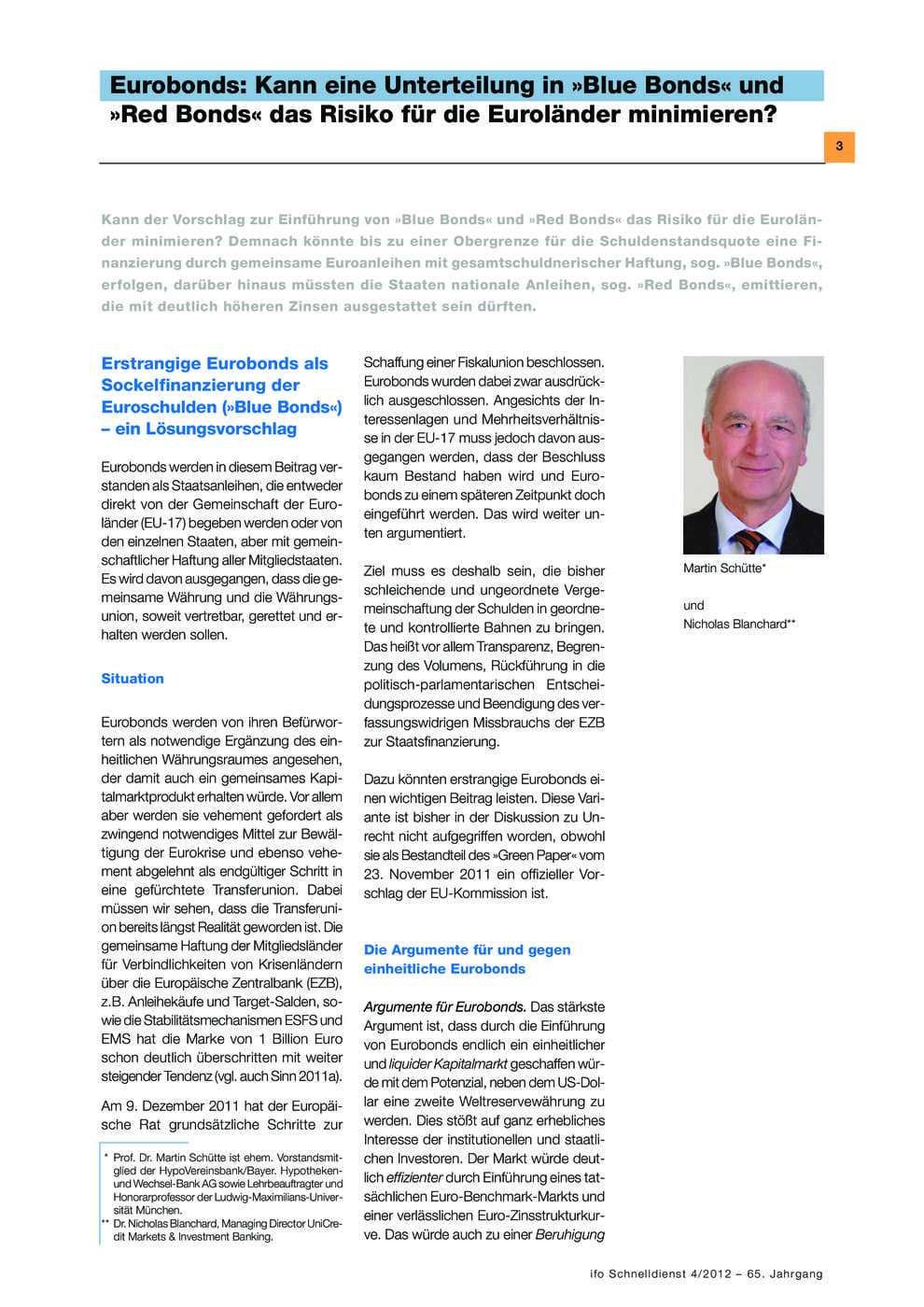Eurobonds: Can a Division into "Blue Bonds" and "Red Bonds" Minimize the Risk for Euro Countries?
ifo Institut, München, 2012
ifo Schnelldienst, 2012, 65, Nr. 04, 03-15

Can the proposal to introduce "Blue Bonds" and "Red Bonds" minimize the risk for euro countries? According to this proposal, financing in the form of common Eurobonds with joint and several liability could occur up to an upper limit for the debt ratio via so-called "Blue Bonds", in excess of this amount states would have to issue national bonds or so-called "Red Bonds," that would bear significantly higher rates. In the opinion of Martin Schütte, a former board member of the HypoVereinsbank/Bayer. Hypotheken- und Wechsel-Bank AG and a lecturer and honorary professor at the University of Munich, and Nicholas Blanchard, Managing Director UniCredit Markets & Investment Banking, dividing the Eurobond market into senior and subordinated issues may constitute an opportunity to avoid the significant disadvantages and risks of standardized Eurobonds, while nevertheless enjoying their anticipated positive effects. Michael Hüther, Institute of the German Economy in Cologne, on the other hand, sees the blue-red variation of Eurobonds as a questionable instrument. The deeper monetary integration accepted by proponents of this idea is far too vague to justify the step to Eurobonds. In the view of Bernd Lucke, University of Hamburg and Indiana University, Bloomington, this proposal does not constitute a convincing alternative to the status quo. It will merely achieve a communitisation of part of country-specific risk, and will do so without offering any financial compensation for the guarantor countries. The disciplinary effect on indebted countries would be questionable, and even if visible initially, stealthy erosion would be likely to set in.